Modern lives are greatly influenced by computers, and no computer can function without a program. Computers programs are put together by programming languages, thus forming the basis of all the conveniences humans enjoy. Programming languages are responsible for all the apps and programs developed by programmers, from online games and antivirus software to scheduling tools and virtual reality. While there are many programming languages, some are specifically designed to aid cybersecurity. This article discusses the best programming languages for cybersecurity in 2023.
A programming language refers to a set of rules that instructs a computer or computing device on the specific tasks to carry out. And with the global rise in cybercrimes, the need for cybersecurity has increased; fortunately, programming languages can help achieve that. This is because the knowledge of programming languages gives experts the confidence to identify potential cyberattacks and come up with solutions to mitigating threats. Programming languages enable developers and cybersecurity experts to know how attacks are launched and reveal weaknesses that can be exploited by hackers.
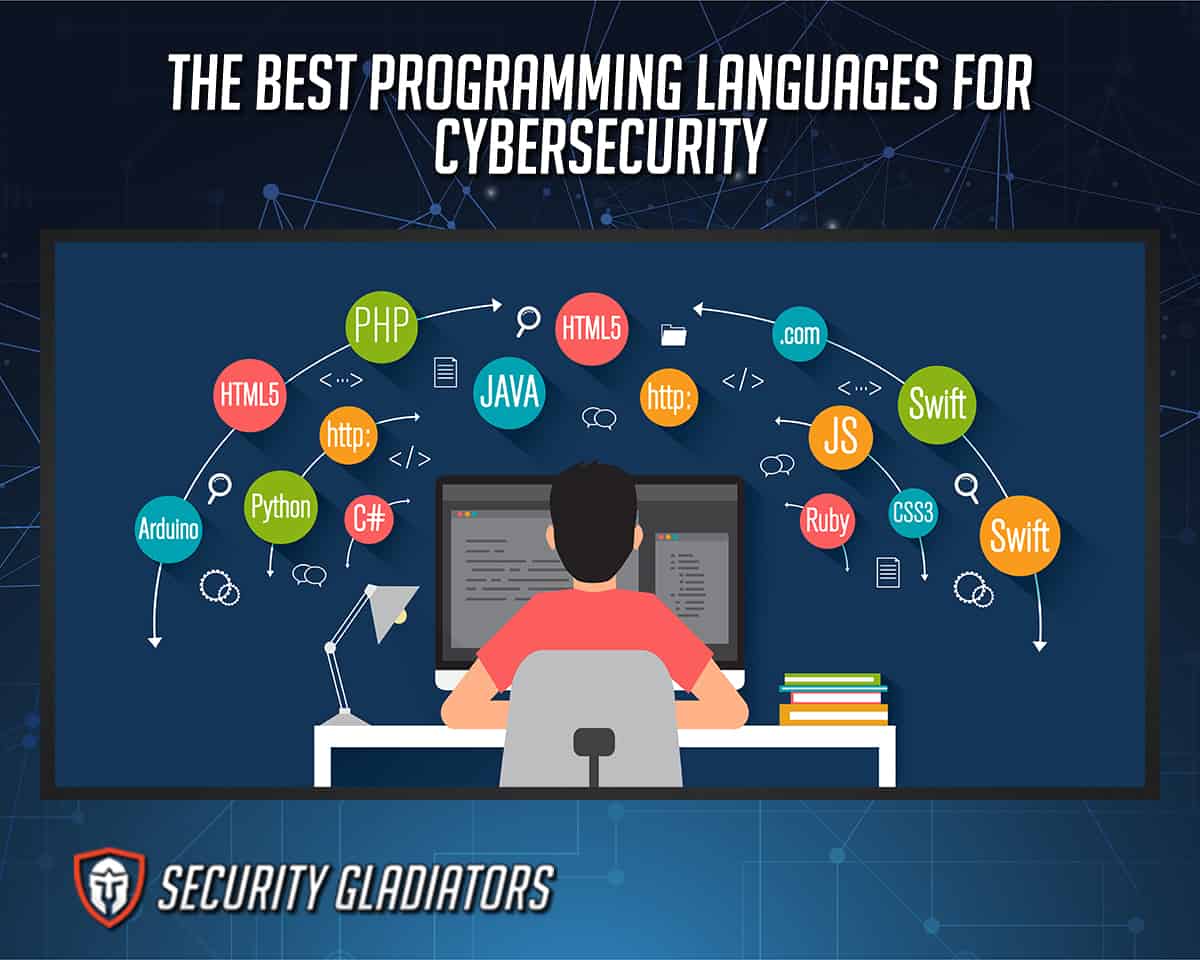
The best programming languages for cybersecurity are given below.
- Python: Python is an object-oriented, interpreted (bytecode-compiled) programming language with dynamic semantics. This language is used for machine learning, web development, operating systems, video games, artificial intelligence and mobile application development.
- GoLang: GoLang is an open-source, statistically typed and compiled programming language that enables programmers to build reliable, efficient and simple software. The programming language is used for writing lightweight microservices and for generating APIs that interface with front-end applications.
- C: This is a structured programming language developed to create system programming for operating systems such as Unix. The low-level programming language is suitable for developing portable applications or firmware.
- C++: This general-purpose computing language is used to develop browsers, operating systems, games and more. C++ gives a concise structure to programs, reduces development costs and enables code to be reused.
- SQL: Structured Query Language is a programming language used in data stream management systems or relational databases. The programming language is used to manipulate and communicate databases.
- JavaScript: JavaScript (JS) is an object-oriented, text-based programming language used to make apps and web pages more interactive and dynamic. On websites, JS is used for validations purposes; the programming language also helps experts execute complex actions.
- PowerShell: This is a cross-platform task automation program composed of a scripting language, a command-line shell and a configuration. The robust solution enables users to automate various time-consuming tasks, as well as discover, filter and export data about a system on a network.
- Assembly: Assembly is a low-level computing language developed to communicate directly with a system’s hardware. The programming language is designed to be readable by humans, unlike other types of machine language.
- Java: Java is a class-based, general-purpose and object-oriented programming language created to have fewer implementation dependencies. The language enables programmers to write computer instructions using English commands rather than regular numeric codes.
- Ruby: This is an open-source, dynamic programming language that focuses on productivity and simplicity. Ruby has an excellent syntax that is easy to read.
- Shell Scripting: Shell script is a computer programming language run by Unix shell. The command-line interpreter performs typical operations such as program execution, file manipulation and printing text.
- PHP: Hypertext Processor (PHP) is an open-source, general-purpose scripting language that helps web developers create static websites, web applications or dynamic websites.
- HTML: Hypertext Markup Language (HTML) is the standard for documents that are designed to be displayed on the internet.
Table of Contents
1. Python
Python is a high-level computer programming language used to build software and websites, carry out data analysis and automate tasks. The programming language is an interpreted, object-oriented language with unique semantics. Python’s high-level built-in data structure, along with unique binding and typing, makes the programming language appealing for use in glue language, scripting or connecting pre-existing parts. Python is used for artificial intelligence, web development, operating systems, video games, mobile app development and machine learning.
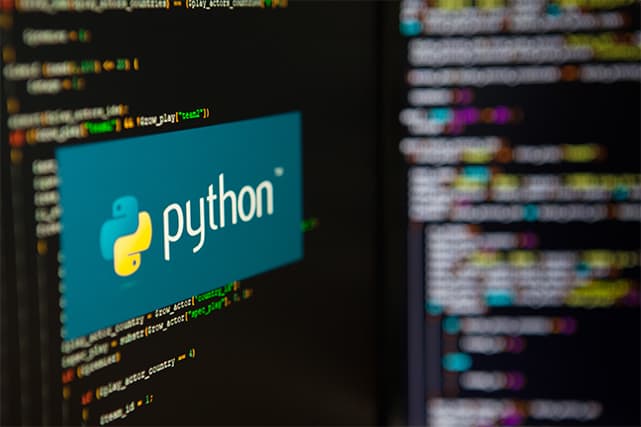
Many programmers love Python because the programming language provides increased productivity and has a super-fast edit-test-debug cycle owing to the absence of a compilation stage. Python is also easy to debug; rather than a bug or bad input causing a segmentation fault, the interpreter is enabled to raise an exception or print a stack trace.
Python is arguably one of the easiest programming languages for beginners but can also be difficult to master. The interpreted, high-level general-purpose programming language can be learned by anyone willing and dedicated, but doing so often requires substantial patience and constant practice.
While there are no stern prerequisites to learning Python, knowing basic concepts—such as what a loop is, functions of “if” and “else,” the usage method of the operator and the difference between front-end and back-end—will help a user learn Python quickly. Also, a learner will require an operating system; cross-platform coding programs support all operating systems, including Linux, Windows and macOS.
The programming language is suitable for beginners, but beyond that, Python is also useful for web developers, business owners and data scientists. The programming language is heavily used in machine learning, professional software development and data analytics.
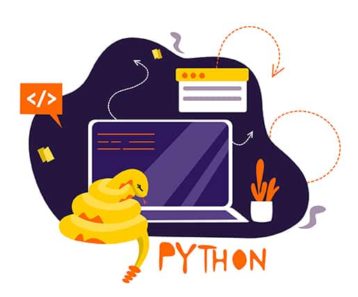
Like other programming languages, there are advantages and limitations to Python. The language is easy to learn, read and write, hence Python’s suitability for beginners. Due to the language’s suitability, developers can solve problems easily and quickly, thus improving productivity. Also, since Python is an interpreted language, the language executes codes line by line. If there are any errors, the language stops continued execution and instead reports the error that has occurred. The language shows one error at a time even if multiple errors occur, which makes debugging easy. Plus, Python is free and open-source, making the language easy to access, modify and distribute. Furthermore, the Python programming language has large library support, which ensures users don’t have to depend on external libraries. But even if that were to be the case, the language has a package manager (pip) that enables users to easily import packages from the Python Package Index (PyPI), which consists of over 350,000 packages. In addition, unlike other languages that require running programs on various platforms, Python only requires the writing of the program once, and then the program can be run anywhere. This makes Python a portable programming language.
On the downside, Python is a dynamically-typed language, and the language’s line-by-line code execution often leads to slow execution. The language’s simplicity also comes at a price since Python is not memory efficient. The language uses a large amount of memory, a disadvantage when building an app that requires memory optimization. Moreover, Python is weak in mobile computing. While programming in Python is easy, the language has a rather primitive database access layer. Also, Python often experiences runtime errors.
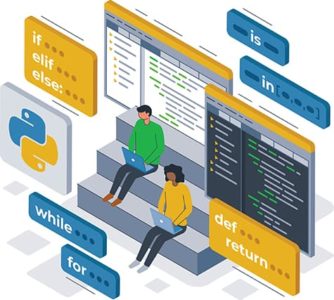
Knowing Python frameworks is necessary, but so is knowing how to connect and use applications through Object Relational Mapper (ORM) tools such as Django or SQLAlchemy, which are faster and more efficient. Also, a developer hoping to build skills in the Python programming language needs to have a basic understanding of front-end languages such as JavaScript, CSS3 and HTML. Other qualifications include knowing about version control and which libraries to use.
Python can perform several cybersecurity functions, such as scanning, penetration testing and malware analysis. Also, the language’s robust library means there are lots of cybersecurity tools available for use. Besides, Python has built-in socket programming, network scanning, geolocation extraction, packet sniffing, real-time extraction from social media and TCP packet injection, all of which are useful for cybersecurity.
2. Golang
Golang (Go) is a statistically typed, compiled and open-source programming language designed by Google and used in building reliable, fast and efficient software. The easy-to-learn programming language is used in developing large software systems and scalable servers. Golang is also used to write lightweight microservices and generate APIs that interface with front-end applications. In addition, the programming language is useful in building small, functional microservices quickly and easily. Golang is not only fast and easy to learn but is also well-scaled and offers a growing pool of talent and comprehensive programming tools.

Golang has a small syntax compared to other programming languages, making this language easy to learn and remember without referencing source materials. Go is very clean and easy to read, but some people consider the program difficult as a low-level language. There are references and pointers such as “&” or “*” that may be hard on the eyes unless the coder is used to other languages like C/C++.

There are some prerequisites needed to learn Golang, one being basic-level experience with the programming language. Though Golang is easy to learn, having basic knowledge will give the developer an advantage. Also, beginners are required to have a command terminal and tools to edit code with, such as a text editor. Go supports any terminal on Mac and Linux and cmd in Windows or PowerShell.
Go is suitable for professional developers who are conversant with many programming languages but need to have more skills. Golang is also suitable for industries and businesses, as the language can be used to solve any level of complexity. Leading tech companies such as Google, Microsoft, Facebook, Dell, HP, Intel, SAP, IBM, Walmart and Red Hat all run on Golang.
Go is minimalistic and very easy to learn as the language’s specification is only 50 pages long, compared to others with 750 pages or more. The clean syntax of the language also makes Go easy to maintain. With a minimal interface, clear code separation packages and no implicit conversions, Go is as simple as a programming language can be. Golang is a compiled language, which means the written code is directly translated into the right format for the processor, making the language very fast and reliable.
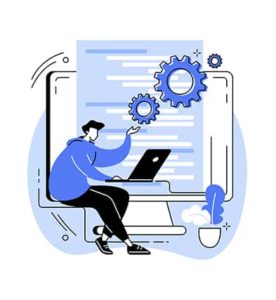
Also, the language’s syntax is designed to be transparent, and with just one standard code format, programmers can track the code’s actions and estimate resources. Golang has a large community, and this can be seen in the language’s self-possessed features, including GitHub, which composes several plugins and editors. The language also has many other resources such as a blog, a Slack channel, a forum and a subreddit, where Go programmers share knowledge with each other.
Furthermore, the language offers excellent backward compatibility, enabling programmers to upgrade an app or software to newer versions when available. The app features Goroutines, a function that runs independently and simultaneously with other functions, taking up little space and ensuring scalability when there are several other concurrent processes.
Note:
However, Go lacks manual memory management, which leads to issues like pauses and garbage collection. Golang also might look superficial due to the language’s overly simple nature. Besides, the language doesn’t handle errors perfectly and has defective runtime safety.To become a qualified Golang programmer, an individual would need to be experienced in Scripting (PERL/Shell). There’s also a need to have experience in app design using patterns, as well as knowing how to use Git. Furthermore, beginners will need to learn JavaScript, REST web services, SOAP or microservices. In addition, the knowledge of DevOps practices will enable a person to be a qualified Golang programmer.
With Go, programmers and developers can produce a single code that can be used for all operating systems. Since the size of malware coded in Golang is large, programmers can use the language to invade systems unnoticed since large files cannot be scanned by most antivirus software programs.
3. C
C is a general-purpose, structured programming language that is well known, flexible and easy to use. The language is machine-dependent and is used to write a variety of applications, including Windows, Oracle database, Python interpreter and Git. The C programming language also finds many applications in the gaming sector.

The language forms a major part of operating systems such as Unix, Linux and Windows. All Unix application programs, C compilers and operating systems are written in C. The mid-level programming language combines the features of low-level and high-level programming; thus, C can be used as kernels and scripting for drivers, as well as scripting for software applications.
The structured program enables complex programs to be broken into smaller and simpler programs that enable data to move freely. C also provides C compilers, machine-level hardware and memory allocation, all of which make the language ideal for scripting applications and embedding systems.
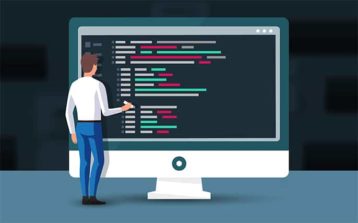
C programming language is easy to learn, with a simple syntax composed of just 32 characters. While C has a more cryptic style, learners can easily overcome that. With frequent practice and a good instructor, the C programming language can be learned in 50 hours.
Before learning C, a beginner will need to learn how to write, compile and run the initial C program. This involves opening the C console and inputting a specific code. Also, learning C language involves using a compiler, which converts source code into the real instruction inputted by the programmer and then converts the instruction into a file that can be executed. Other prerequisites to learning the C programming language involve learning basic variable types, operators and the use of standard libraries.
The C programming language is suitable for system analysts and software developers. The language finds lasting use in apps coded in an assembled language, including operating systems and application software such as supercomputers, device drivers, compilers and embedded systems.
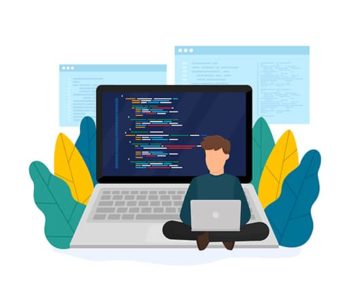
C is a building block for many other programming languages, including C++, Python and Java. The robust language features many types of operators and data, providing a large platform for various operations. The C language is flexible and allows running code with little or no change to the programming. Also, there are just 32 keywords in ANSI C. The programming language can self-extend and is structured, thus dividing complex problems into smaller functions for easy testing and maintenance.
The mid-level language supports both high and low-level language, while the use of algorithms and data structure makes computation fast and easy. The C programming language adheres to the proper procedure for the language’s subroutines and functions, while the coding language’s dynamic memory allocation enables users to assign memory at run time. In addition, C follows a system-based programming system.
On the downside, while the language is quite vast, C does not support the concept of Inheritance, Polymorphism, Encapsulation, Abstraction and Data Hiding (OOPs); instead, the program follows a procedural programming method. Bugs or errors in the C programming language aren’t detected after each line of code, but rather, the compiler displays the errors after the program has been written.

The language does not adopt the concept of a namespace, meaning two variables of the same name cannot be declared. Moreover, the C programming language lacks exception handling, a feature that lets users detect errors and bugs and take corrective actions. Furthermore, the C language does not have an abstractor or a destructor.
There are various certification programs in C programming. One is CLE (Certified Entry-Level Programmer Certification), which is ideal for beginners. There’s also C Certified Associate Programmer Certification (CLA), ideal for people with basic knowledge of C programming. In addition, there’s the C Certified Professional Programmer Certification (CLP), as well as Programming in C.
The C programming language is necessary for cyber security because the application of the language in reverse engineering helps in developing antivirus processes. C is also needed to develop QA code integrity. Overall, C is an essential low-level programming language that is needed by cyber security experts. This is because the language enables users’ access to low-level IT structures like RAM and other system processes, which need to be protected to prevent exploitation.
4. C++
Like C, C++ is another general-purpose and object-oriented computer language that can be used to develop browsers, operating systems and games. C++ is an advanced version of the C programming language. C++, which was developed by Bjarne Stroustrup at Bell Labs in 1980, gives concise structure to programs while allowing codes to be reused and reducing the cost of development.
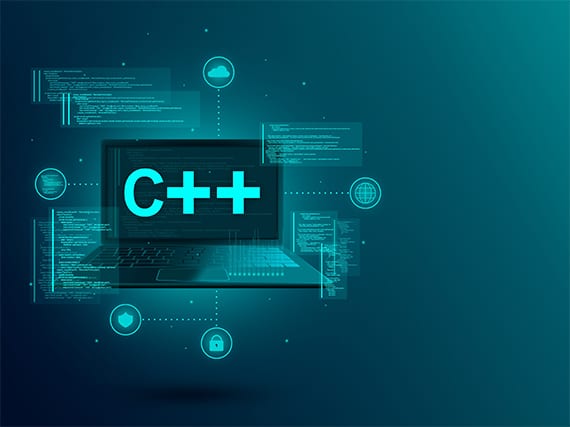
C++ can be applied in GUI-based desktop applications, games or database software and for writing operating systems such as Apple OS, browsers and Microsoft Windows OS. C++ is also used in banking applications, advanced graphics and computation, cloud/distributed systems, compilers, high-level machine language libraries, enterprise software and embedded systems.
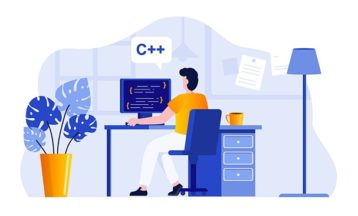
The mid-level programming language is portable, enabling programmers to create codes without worrying about the hardware. The object-oriented computer language has rich library support and is faster than most competitors. Also, the language has to be compiled into low-level code before being executed while offering pointer support.
Admittedly, C++ is one of the most difficult programming languages to learn because the language uses a variety of paradigms. A programmer will need to become familiar with various programming concepts before C++ can be used efficiently. The difficult syntax coupled with the many features makes the language harder than others.
Note:
Before C++ can be learned, a programmer or developer will be required to learn the fundamentals and features of the language and the applications involved. In addition, beginners will need to set up an environment to compile and run the C++ program.
C++ is suitable for web ad software developers and data analysts. The programming language is used in building well-known database tools such as MongoDB and MySQL. These databases are the foundation of many popular applications, including those developed by Adobe, YouTube, Netflix and Google. The computer language is suitable for structuring databases to support effective storage.
C++ has a platform independence feature, allowing the program to run on multiple operating systems without any issues. As a mid-level program, C++ provides little or no abstraction from the language’s architecture, so the program maintains a similar structure to that of the processor. Also, C++ is object-oriented, a feature that comprises inheritance, classes, data abstraction, encapsulation and polymorphism, thereby making codes easily reusable while increasing the reliability of the programs. The programming language is also a multi-paradigm programming language, a concept based on a certain computation model. Therefore, the language supports various paradigms such as overload functions, classes, templates, procedural programming and modules.
C++ ensures fast and easy compilation and execution, and since the programming language has a similar syntax to C, C# and Java, users can easily switch from one language to another. The language can be run on a file CPP extension. Moreover, C++ allows programmers to be scalable at will, meaning apps can be built and run on a small scale before advancing to a large scale.

However, like most programming languages, there are a few downsides to the C++ programming language. Despite being object-oriented, C++ is prone to security vulnerabilities as poor coding can expose the language to hackers. The language also lacks garbage collection, preventing unnecessary data from being filtered out. Also, the pointers in the language are not easy to comprehend and end up utilizing a lot of memory; the misuse of pointers can lead to a crash or memory corruption. C++ lacks support for built-in threads and has no automatic memory management. Finally, the language has a steep learning curve and is not the most flexible programming language.
There are many certification and qualification programs in the C++ programming language. There’s the C++ Certified Associate Programmer Certification (CPA), the C++ Certified Professional Programmer Certification (CPP), the Star C++ Certification and the PCE C++ certification. Others include Basic C++ Certification from edX, the From Beginner to Beyond C++ course and the Unreal Engine C++ Developer, among others.
Cybersecurity experts benefit from learning the C++ programming language because the language enables the easy detection of security weaknesses and vulnerabilities. Also, the use of scanning tools such as Flawfinder enables a security expert to easily detect a security flaw in codes. And since most malware programs are written in C++, having a sound understanding of the language will enable a cybersecurity expert to read, detect, understand and resolve malware written in the language.
5. SQL
SQL (Structured Query Language) is a programming language that provides logic directives, looping, variables and more. The domain-specific language is used to communicate with relatable databases and in programming. According to the American National Standards Institute (ANSI), SQL is the standard for relational database management. Thus, the language is used to perform duties such as data retrieval or updates from a database. The language is also used by most apps, including Google, Apple, Amazon, Airbnb, Uber, Netflix, Wells Fargo, WordPress, Shopify and others.
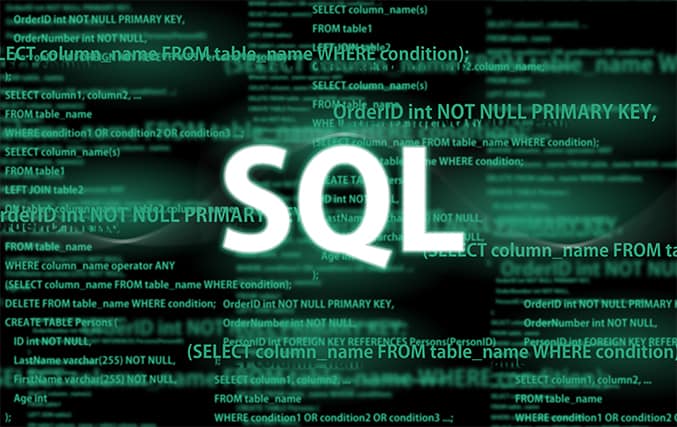
SQL is used to retrieve a large amount of data efficiently and quickly. The portable programming language does not need a large number of lines of code and enables multiple data views. SQL is easy to learn and understand, and answers to complex queries are retrievable in seconds.
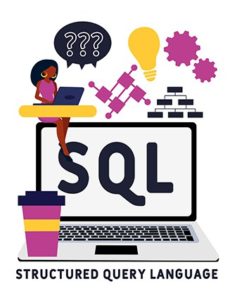
Generally, SQL is a very easy language to learn, even more so if the programmer has an established or basic knowledge of other languages. For these categories of people, SQL can be learned in a few weeks, but for beginners with no knowledge, mastering SQL may take longer.
There are no requirements for learning the SQL programming language. SQL is a query language similar to the English language, so anyone with a basic knowledge of English can learn and write SQL easily. Also, most databases support SQL code and do not require knowledge of any programming language.
SQL is suitable for database administrators and individuals, companies or organizations that require data from a database to be retrieved or updated. Examples of such relational databases include Ingres, Oracle, Sybase, Microsoft SQL Server and Microsoft Access.
The SQL programming language is easy as the language does not require any sound knowledge about coding. The language has some basic keywords, such as “Update,” “Insert Into” and “Select,” that are easily applicable to tasks. The language’s syntax rules are easy to follow. And since SQL is capable of processing a large amount of data in seconds, all the processes —including manipulating, querying and calculations of data, along with analytical queries—are done fast and easily.
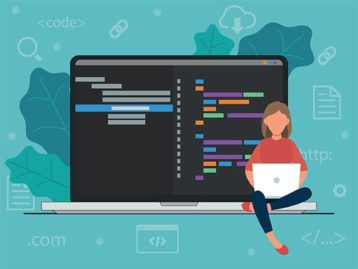
The programming language is the standard query language for a relational database and is approved by the ANSI and ISO. SQL is also portable and can be used in servers, PCs and independent PCs with operating systems such as Linux, Mac and Windows. The language can also be embedded in other apps. In addition, SQL has a simple command for most tasks, making the computing language highly interactive.
Despite all the advantages of SQL, the programming language has a poor interface that makes the language look complex even when that is not the case. Also, SQL is not cost-efficient since the price of an SQL server costs about $1,400 per year. Moreover, SQL does not give users complete control over databases, and SQL is always under threat due to the sensitive data the language stores.
Some certifications validate an individual’s knowledge of the SQL programming language, including Azure Data Fundamentals, the Oracle Database SQL Certified Associate Certification, IBM Certified Database Associate, the MySQL 5.7 Database Administrator Certification and the EDB PostgreSQL 12 Associate Certification.
Knowing SQL, the language’s uses and how SQL injection attacks occur enable programmers and developers to manipulate websites to benefit cybersecurity experts. The knowledge of SQL injection, which is one of the greatest cybersecurity threats, enables security experts to prevent such attacks. Database security is crucial to cybersecurity because most hackers target systems that contain sensitive information. But with the knowledge of SQL, cybersecurity experts can further strengthen databases and prevent hacks.
6. JavaScript
This is an open-source scripting programming language that enables programmers and developers to develop control multimedia, animate images and update content dynamically, as well as change both CSS and HTML. The object-oriented language is primarily used to develop interactive effects within internet browsers. JavaScript is also used to create mobile apps and websites, as well as build and develop web servers and server applications, including games. The standalone language, which was developed in Netscape, is used to add special effects on pages such as roll-out, rollover and other types of graphics.
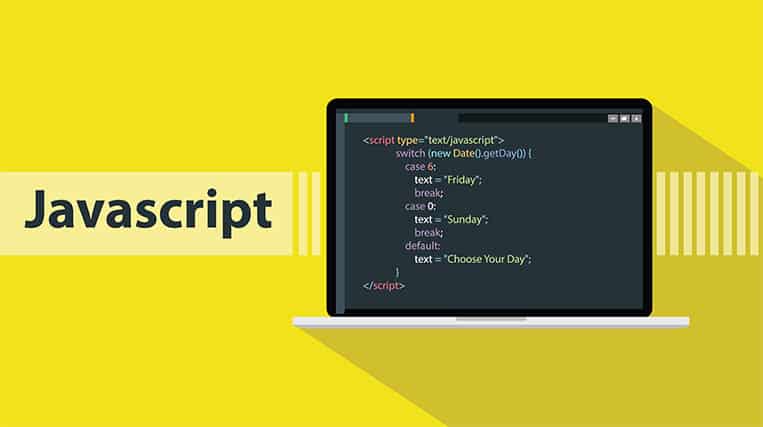
JavaScript tends to be very fast because the language usually runs immediately on a client’s browser. The independent language is easy to use and offers highly supportive features. JavaScript also has extended functionalities that ensure unavailable features can be added from third-party integration.
JavaScript is arguably one of the easiest programming languages to learn, serving as an excellent start for beginners. Several resources can help beginners learn the language easily.
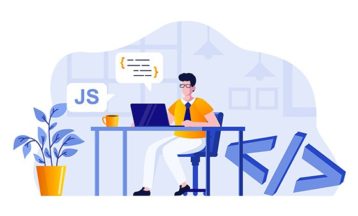
That said, beginners who wish to learn the JavaScript programming language will be required to know the basics of CSS and HTML, but those are fairly easy to learn. Learners will also be required to get started with the web; this involves reading through the JavaScript introduction for better understanding.
]JavaScript is suitable for web developers. The scripting language enables programmers and web developers to implement various complex features on web pages, including animated 2D/3D graphics, interactive maps, content updates and scrolling video jukeboxes.
As an interpreted language, JavaScript reduces compilation time, speeds up the execution time of a program and ultimately saves the time needed to connect to the internet. JavaScript has a simple structure and is easy to implement, allowing developers to save money that could have been used for developing dynamic content.
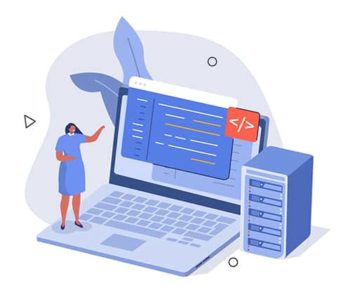
The computing language supports all major browsers and is used by tech giants like Amazon, Google and PayPal, making the language popular among web developers. Moreover, JavaScript works well with other programming languages. The language can also be embedded into the script of any programming language or in any web page if unavailable.
JavaScript has a rich interface and extended functionalities with add-ons that enable developers to build the language’s application faster and easier. Also, JavaScript can develop front-end and back-end. While the back-end development utilizes NodeJS, libraries such as AngularJS help in front-end development. With JavaScript, there is less overhead as the language reduces code length to improve the performance of web apps and websites.
On the downside, the scripting language’s code can be seen by other users, making the language vulnerable to cyberattacks. Cybercriminals can easily place codes that can compromise the security of data over the internet. JavaScript does not offer effective and efficient browser support. Since different browsers interpret the programming language differently, the code must run on various browsers before being published, which is inefficient. JavaScript lacks debugging facilities, preventing developers from spotting and fixing errors. In addition, the programming language only supports single inheritance and has a sluggish bitwise function.
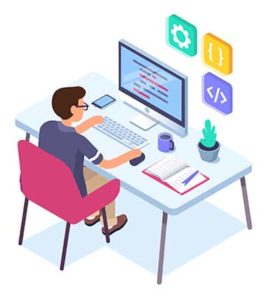
There are JavaScript qualifications suitable for beginners, intermediates and experts. Certifications such as The JavaScript Developer Certificate and Introduction to Programming Using JavaScript are suited for beginners. For intermediates, certifications such as CIW JavaScript Specialist are available, while advanced learners could go for Certified JavaScript Developer.
JavaScript enables cybersecurity experts to develop secure sites and user interfaces. The programming language prevents potential cross-site scripting attempts and reduces other technical risks. JavaScript also enables programmers and developers to work with cookies, carry out cross-site scripting (XSS) and manipulate event handlers.
7. PowerShell
Microsoft PowerShell (PowerShell) is a cross-platform task automation and configuration management solution that consists of a scripting language, configuration and command-line shell. The robust solution enables users to automate various time-consuming and difficult administrative tasks. The scripting language also finds, filters and exports information about the systems on a network. PowerShell is often used to automate the management of systems. The scripting language is also used to create, test and deploy solutions that are usually in CD/CI environments.
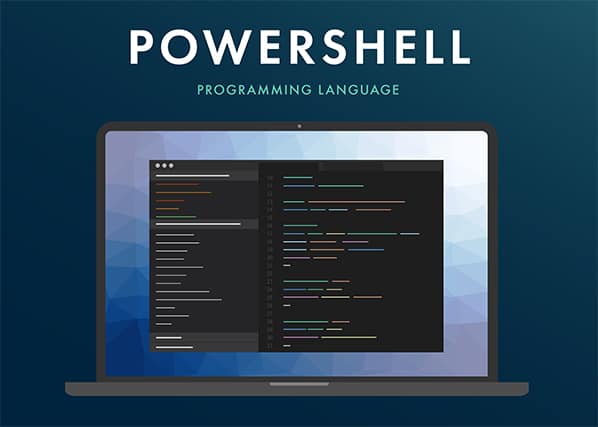
The object-oriented scripting language offers more functions than traditional scripting languages such as VBScript and cmd.exe and can be extended through plugins and cmdlets. The language supports the automation of tasks, as well as forums and .NET objects. Furthermore, PowerShell is very interactive and reusable.
Fortunately, PowerShell is one of the easiest languages to learn. The scripting language follows a “verb-noun” convention, a method that makes even the hardest scripts easy to use. The language will typically take about one to two weeks to learn.
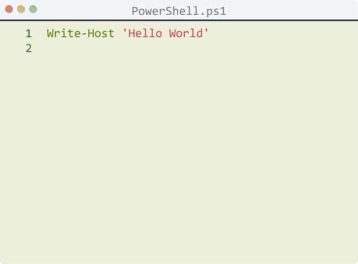
To learn PowerShell, beginners will need a laptop to experiment. Also, having a background knowledge in Windows administration will enable learners to get a quick grasp of the language. There’s also the need to have a grasp of how to use basic command-line shells such as Git Bash or Command Prompt. Furthermore, users should have visual Studio Code and the extensions installed. Ensure software can be installed on the PC if a Windows OS won’t be used.
There are many advantages to PowerShell. The scripting language has a secure scripting engine and a rich, Cmdline based interface. Also, PowerShell features more than 130 command-line tools to enable admins to work on both remote and local Windows systems. PowerShell is automatically built into every Windows version, making the language easier to use.

However, PowerShell is limited by the lack of widespread popularity. Also, while the language boasts of having an excellent error handling system, audit logs, event-based triggers and security features, these features do not work efficiently and take a long time.
There are no certifications for PowerShell yet. However, there are many Microsoft certifications that require PowerShell. Examples include MCSA (Windows Server 2016), MCSE, Azure Administrator, MCSE Mobility and Modern Desktop Administrator.
PowerShell supports ethical hacking, a necessary system that enables security experts to detect vulnerabilities and find solutions to the weaknesses. PowerShell integrates smoothly with Microsoft NET., providing ethical hackers with the right platform to pass through the scripting language into the Windows environment.
8. Assembly
Assembly (ASM) is a low-level programming language designed to enable direct communication with a computer’s hardware. While most languages are composed of hexadecimal and binary characters, Assembly is designed to be read by humans. Assembly requires less execution time and uses less memory, thus making the language suitable for accomplishing complex tasks easily.
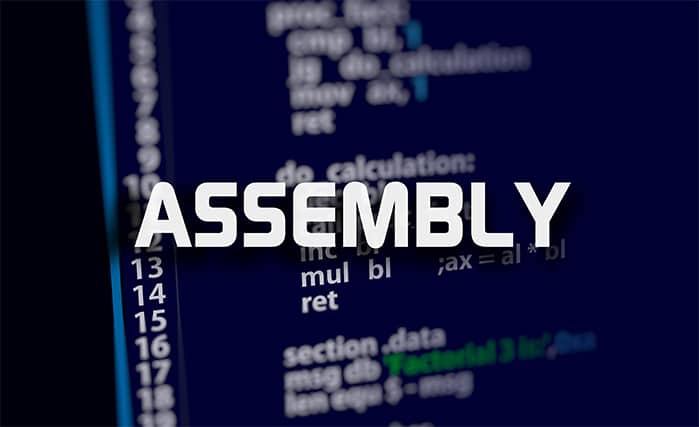
The Assembly programming language is used to address serious performance problems, access specialized processor instructions or for direct hardware manipulation. ASM can be applied in real-time systems, low-level embedded systems and device drivers. Assembly language is time-efficient, uses less memory and allows complex tasks to run more easily. Assembly also has a fast execution speed and is mostly hardware-oriented. Furthermore, ASM is used to carry out breakpoint instructions, move from bootloader to application and tutor microcontroller fundamentals. The language is also used for code optimization in a control loop.
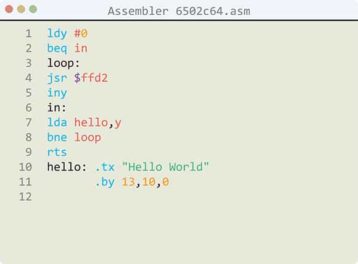
Assembly is not a difficult programming language as there is nothing too hard to grasp. However, memorizing the various modes and instructions may be difficult to achieve when a person has a short-term memory. The language requires a deeper knowledge of system architecture, albeit at the lowest level. The basics of Assembly can be learned in two weeks.
Some prerequisites are required to learn the Assembly programming language. A beginner will need to be familiar with binary and hexadecimal notation of numbers. There’s also the need to be familiar with bitwise logic operations and the model of the operating system. Having a basic knowledge of data communications, graph theory, networking, logic design, databases, graphics, discrete mathematics, algorithm development, data structures and other relevant concepts will help learners grasp the programming language easily.
Assembly is beneficial in many ways. The computing language allows complicated tasks to run simply and requires less memory, thus increasing the speed and reducing the time needed to execute a task. Besides, ASM is used to carry out crucial tasks as the language requires minimal instructions to get a job done. In addition, ASM is mainly hardware-oriented and is not needed to track memory locations. The Assembly programming language is also a low-level embedded system.
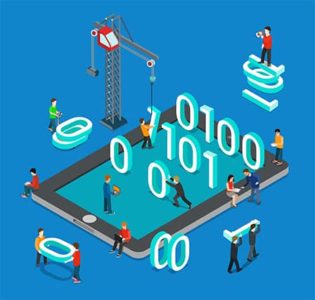
On the downside, more memory or size is required to run long programs written in the ASM language. Assembly isn’t the simplest to understand as the complex syntax makes the language difficult to remember. Also, ASM lacks the portability of programs between various computer architectures, and writing code in the language takes a decent amount of time and effort.
Several certifications are offered for ASM programming, including Complete x86 Assembly Programming, the x86 Assembly Language Programming Masters Course, x86 64-bit Assembly Language, Linux x86 Assembly Language Programming and the Jamaican Language (PATWA) Learning Guide for Beginners.
Assembly programming language is a necessary language to cybersecurity as security experts may use the language to detect and interpret malware programs and understand the mode of attack involved. Like most programming languages, ASM helps cybersecurity experts to develop more stringent measures to fight cyberattacks.
9. Java
Java is a programming language and a software platform. As a software platform, Java provides a system for developing application software and deploying the programs in a digital or computing environment. Java is employed in various computing devices such as embedded devices, mobile phones and supercomputers. As a programming language, Java is a set of guidelines and commands that translates to instructions that tell the computer what to do.
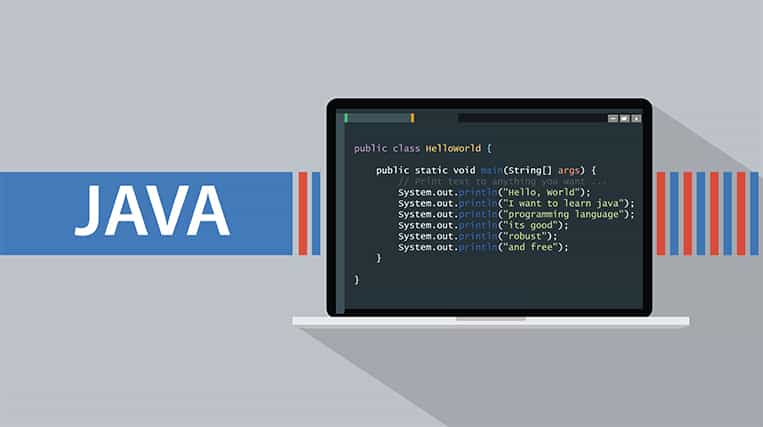
This computing platform/programming language can be applied in different areas such as mobile app development and cloud-based applications. Other areas where Java can be employed include web-based applications such as front-end and back-end development, desktop GUI applications, gaming applications and big data systems.
The Java programming language allows programmers to “write once, run anywhere” (WORA). This means that once compiled, Java codes can run on any system that supports Java without the need for recompilation. Another benefit of Java is simplicity as the programming language is easy to write and learn.

Java is also easy to understand and is less complex than other programming languages such as C and C++. This is because the complex features found in these languages, such as the explicit pointer concept, have been removed from Java. Furthermore, Java is a secure programming language, economical to maintain and has a portability feature allowing the language to be run on a wide variety of platforms.
While Java is packed with benefits, learning the language is not effortless. However, this language proves to be easier to learn when compared to other programming languages such as C and C++ and can be quickly learned with the required effort. The programming language is also considered beginner-friendly.
There are no prerequisites to learning Java. However, the learner has the upper hand with basic knowledge on how to use a computer and what programming is all about. Certain skills such as JavaServer Pages (JSP) and servlets, web frameworks like Struts and Spring, web technologies like HTML, CSS, JavaScript and JQuery, object-oriented programming (OOP) concepts and patterns, and regular reading of sources on Java programming are also required for smooth learning of Java.

Given the application of Java in software development, the programming language is commonly used by software programmers and developers. Other professions that make use of Java include quality assurance analysts, UX designers and programmer analysts. Java is also suitable for beginners due to the language’s ease of use and simplicity.
Some strong points of Java are that the computer language is easy to write and compile. Java also has an object-oriented concept that allows the object to be reused in other programs. Furthermore, Java is considered a high-level programming language similar to the human language, with syntax that’s simple and easy to maintain. Java also allows multiple threads to run simultaneously, increasing the application’s performance.
On the downside, Java has been said to be slow and has poor performance. The programming language also requires a considerable amount of storage space for execution. The codes are also wordy, containing many words and making readability difficult. Also, Java does not offer backup facilities for users, with the primary focus being on data storage.

Learning Java usually means acquiring a bachelor’s degree in computer science or a related field. Certain certifications, such as Oracle Certified Associate Java Programmer (OCAJP) and Oracle Certified Professional Java Programmer (OCPJP), can also be acquired. This will help boost skills in web technologies and markup languages and make learning easier.
Java is one of the best programming languages for cyber security. As one of the first languages to be used in the design of many operating systems, the language is applied extensively in all industries. Java is also used in the exploitation of security vulnerabilities present in proprietary software applications. As such, knowledge of the programming language is required to counter these exploitations.
The language is also used by penetration testers in the organization of high-scaling servers used in payload delivery. Another important feature is the fact that Java is highly dynamic, drawing popularity among security experts. Also, the language is used by ethical hackers with experience to develop ethical programs.
10. Ruby
This is a dynamic, high-level, cross-platform and open-source programming language that supports many programming paradigms. The language emphasizes productivity and simplicity in programming, with a syntax that is considered natural to read and easy to write. The language was created by carefully blending parts of the favorite languages of the creator, Yukihiro Matsumoto, to give rise to a program that effectively combines functionality with imperativeness.

Ruby is a general-purpose programming language. However, the language is primarily used in building web applications. Other Ruby applications are in the field of data analysis and proof of concepts. Ruby has also been employed to build various tools and software such as Homebrew, a popular tool for installing software packages on macOS, and Metasploit, a security software program that tests websites and applications for security strength. Furthermore, Ruby is used to build desktop apps, static websites, data processing services and automation tools. This programming language can also be employed in web servers and web scraping and crawling.
Ruby is open-source and makes use of elegant and powerful codes. The language also allows free use, copy, modification and distribution. Ruby can be used in other projects, allowing programmers to make needed modifications without feeling restricted. Ruby also enables the simple and fast creation of web applications because using the language requires less tedious work.
Ruby is considered fairly easy to learn, ranking among the top five easiest languages to learn. This beginner-friendly language also has a helpful community with loads of free, helpful resources. Also, the Ruby on Rails framework makes the language easy to use.

Like every other programming language, learning Ruby requires fundamental knowledge of computer science and programming. The learner also needs to know a bit about the database that has been chosen for learning. Learning Ruby also requires knowledge of CSS, HTML and JavaScript technologies, which are necessary to become a front-end web developer—an important skill for the Ruby on Rails framework.
Although Ruby on Rails offers great solutions in the usage of Ruby, programmers would struggle to face more serious issues without good knowledge of Ruby. Beginners are therefore advised to learn Ruby before learning Ruby on Rails.
Ruby is recommended for beginners in computer programming because of the ease of use and the vast amounts of resources available as learning materials. Software developers and programmers also make use of this dynamic programming language in the creation of apps like Twitter, Hulu and Urban Dictionary. As a general-purpose programming language, Ruby can be employed in several fields. Professionals such as web developers, programmer analysts and cybersecurity analysts make use of the language in the respective fields.
Programmers and developers can benefit from using Ruby by having the freedom to be creative. Ruby allows programmers to employ creativity in solving problems and offers more than one way of carrying out tasks.

This programming language also offers a friendly and dedicated community offering support in the form of videos, podcasts and other resources. Other advantages of Ruby include the simplicity of use and ease of learning, and that the language is open-source and offers plenty of unusual and uncommon features for web development.
On the downside, the flexibility of this programming language means that detecting and fixing errors can prove difficult. Ruby is also not very popular among back-end developers and programmers. Another downside is the fact that applications built with Ruby are a bit slower than other programs.
Various IT courses and certifications are offered for certain skills needed in Ruby programming. Examples of such courses include Ruby Essential Training from LinkedIn Learning, the Ruby on Rails development Certification by Johns Hopkins University and Dynamic Web Applications with Santara-Ruby Web Development Fundamentals.
Ruby is considered a good option for cybersecurity because the language gives programmers the liberty to do anything without needing to depend on other languages. In addition to this, Ruby has gained popularity among coders because of the language’s ease of use and ability to handle massive code projects. With Ruby, programs are also easy to develop, with fewer codes too.
11. Shell Scripting
A Shell Script is a computer program designed to be run by the Unix/Linux shell. The program writes a series of commands that the shell executes. Shell Scripting is open-source and performs typical operations such as program execution, file manipulation and text printing. This computer program combines lengthy repetition of command sentences into a single script that is simple and can be stored and executed whenever—thereby reducing programming efforts.
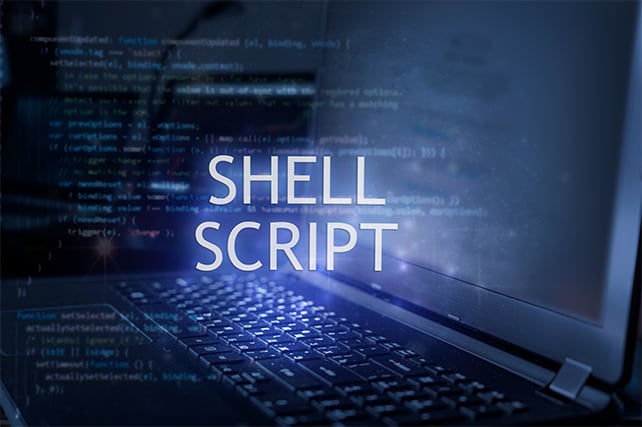
Shell is an interface between the user and an OS service that provides users with an interface while also accepting commands that can be read by humans, executing those commands and giving output for the program in a shell script. Some examples of shells include the Bourne Shell, C Shell, Korn Shell and the GNU Bourne-Again Shell.
Shell Scripting can be applied in many areas, including automating code compiling processes, running a program, completing a batch, linking existing programs together, monitoring a system and creating a programming environment. Shell Scripting also allows the automation of daily tasks and executing routine backups.
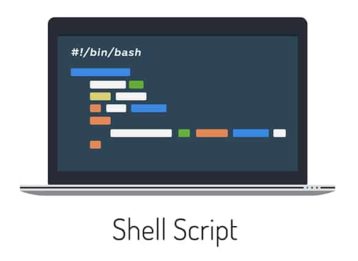
There are a few gains from the use of Shell Scripting. The first is that Shell Scripting is easy and much faster than writing an equivalent code in other programming languages. A Shell Script can also be used to provide a linkage between sequencing and decision-making for existing programs. There is also an absence of a compilation stage for moderately sized scripts, and an interpretive running simplifies the process of writing and re-running debugging codes to detect and fix bugs.
Learning Shell Scripting is considered easy once all the prerequisites are met. The learner needs to have a grasp of some concepts, such as data streams (pipelines, standard in/out), command and command-line arguments and options, and the effect of “shell metacharacters.” Also, learning scripting is considered much easier than learning programming, though a scripter still needs a fair knowledge of programming languages.
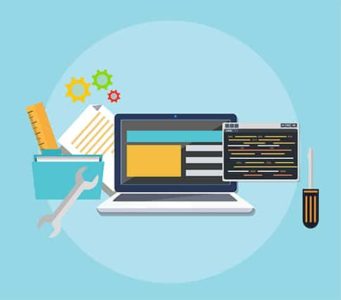
Other basic prerequisites must be met to learn Shell Scripting easily. For example, the learner needs to be familiar with the Linux/Unix command line and with running simple commands. The learner also has to be familiar with the concept of Unix file permissions and running commands in the background. Generally, a basic knowledge of IT and computer programming is required for learning this form of programming.
Shell Scripting can be employed by system administrators for the automation of repetitive tasks. The program can also be used by the administrator for a variety of other functions, such as monitoring the system status, creating accounts for different users, terminating multiple processes and making changes at the system level that will reflect after a system reboot by directly interfering with the operating system.
Scripting can also be used by programmers to develop programs. Performing system-level tasks, discovering patterns in a file and processing data based on user input are tasks that can also be achieved with Shell Scripting.

Some strong points of this method of writing computer programs include the ease of carrying out daily tasks via automation and the ability to run a sequence of commands as a single command. Shell Scripting is also easy to use and can be executed in any operating system that resembles Unix without having to modify it.
However, a few negatives of Shell Scripting include a slow execution speed compared to programming languages. The program also requires launching a new process for the execution of almost every shell command.
Given the relative ease of learning Shell Scripting, anyone can learn Shell Scripting. However, a basic knowledge of programming is required for this process. Beginners can learn Shell Scripting through courses like Shell Scripting with Bash, Hands-on Introduction to Linux Commands and Introduction to Shell Scripting for DevOps.
Shell Scripting possesses certain features that can apply in the area of cybersecurity. For example, the program is employed in the quick automation of a system configuration lockdown for security purposes and also facilitates sufficient access.
12. PHP
PHP is an open-source, general-purpose, server-side scripting language used in the development of interactive websites. The language is one of the first languages that can be executed on the server and embedded into HTML. This feature of PHP makes adding functionality to websites easy without the need to call on external files for data.
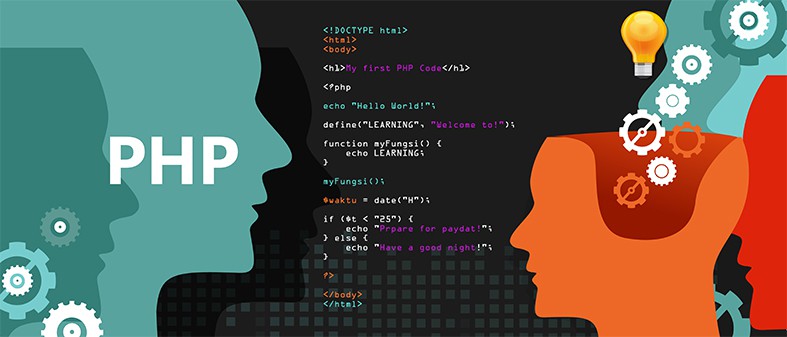
This scripting language was created by a Danish-Canadian programmer, Rasmus Lerdorf, in 1994. PHP originally meant “Personal Home Page,” but the acronym now stands for “PHP: Hypertext Preprocessor.” Being a server-side technology, PHP runs on the back end of a website and can be used on several operating systems, such as Linux, Mac, Microsoft Windows and Solaris.

With a primary focus on server-side scripting, PHP can perform operations such as collecting form data, generating dynamic page content, and sending and receiving cookies. However, there are a few other areas where PHP can be applied, including website authentication, payments, adding content to a website and user management in a site. PHP can also be applied in developing desktop applications with a graphical user interface and in command-line scripting.
Compared to other programming languages, PHP is easy to learn and is even considered to be one of the easiest scripting languages. The language is also equipped with a host of add-ins that extend the language’s functionality. In addition to these, PHP is open-source and boasts extensive online community support. These features of this scripting language have raised the popularity among new users and established agencies worldwide.
PHP is among the easiest programming languages to learn, aided by the vast amounts of resources available for beginners and a soft syntax. Learning PHP is much easier when the learner has prior knowledge of other web development technologies.
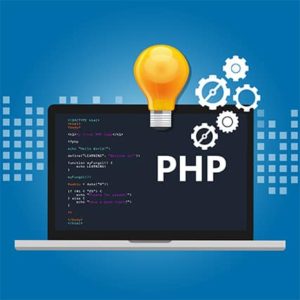
The requirements for learning PHP vary with different course providers. While some claim that no previous knowledge of PHP or programming is needed, others say a basic understanding of HTML is required. However, certain basic skills must be mastered first before learning PHP, including how to begin and end PHP code using <?php and?> respectively, how to use echo and print statements, and how to set a variable.
As a server-script technology, PHP can be applied by back-end web developers in adding certain functionalities to websites and creating web applications. PHP can also be applied in ecommerce, where the scripting language is used to create customized websites for businesses without any security alert. Examples are ecommerce solutions like Magento, Ubercart and Zen Cart.
PHP is favored among web developers over other scripting languages such as CGI and ASP. Some of the reasons given are that PHP is easy and simple to learn. PHP doesn’t require intensive studying, with a logical and well-organized syntax. Also, the easy-to-understand functions help web developers create and optimize web applications with ease. PHP is also flexible and cost-efficient, offers easy integration and compatibility, has the potential to tender an efficient language, and gives the web developer more control in programming.

Despite the advantages of this scripting language, there are also a few drawbacks. PHP is often considered not to be secure enough, mainly because the language is open-source and the ASCII text file is easily available. The language is also said not to be suitable for web applications that are content-based and lack the debugging tools needed to search for errors and warnings. Using more features and tools has also been said to result in poor performance of online apps.
Like any other programming language, learning PHP requires a basic understanding of certain tech and IT skills, such as knowledge of other programming languages and being comfortable with Compose, PSR and PHPUnit. Having a degree in computer science or a related field can be an added advantage. However, given the simplicity of the language, PHP can be learned through online courses.
Since PHP can be considered the most powerful server-side language, the programming language is used on the majority of websites and domains. Therefore, understanding this language is essential for protection against attackers and removing any vulnerabilities in the programmer’s code. Also, RIPS, a tool for PHP apps, is used in performing automated security analysis.
13. HTML
HTML stands for Hypertext Markup Language and is the standard markup language for documents to be displayed on websites. This language is the code used in defining the structure of web content, enclosing certain parts of content with simple tags enclosed in angular brackets (< >) to make the parts look or act in a certain way.

There are many areas where HTML can be applied in web development. HTML is used by web developers to design how a web browser displays certain elements such as text, hyperlinks and media files. This markup language can also be used in internet navigation, where the language is used to embed hyperlinks, facilitating the navigation and insertion of links. HTML also enables organizing and formatting documents similar to Microsoft Word. In addition to these, HTML has been considered officially as a web standard.
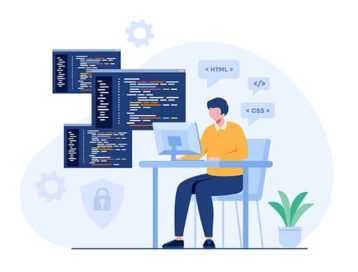
Given the simplicity of HTML and the application in web content structuring, the language can be beneficial to small or growing businesses that don’t want to purchase software and don’t need any high-level programming for business websites. Other benefits of using HTML are that the language is free, lightweight, user-friendly and supported by all browsers.
Despite being a very powerful tool, HTML is easy to learn. The basics of the language can be learned in as little as an hour, and once the tags are understood, one can start writing simple HTML pages. However, the time taken to learn HTML depends largely on the purpose of learning the language.
While learning the principles can take a few days of memorizing the codes, designing interactive websites can be a different story altogether. In all, a good blend of skill and creativity is needed to create web pages using HTML.
Being a text-based computer coding system, HTML does not require any formal education. The coding system is so simple that children (age six and up) can even run the coding. Basic knowledge of HTML does not require any advanced computer knowledge. However, going further into the coding system has a minimum requirement of a moderately educated individual.
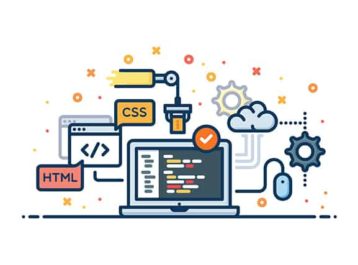
Programmers recommend that newcomers undertake two to four hours of daily practice to become proficient in the language. Still, many beginners learn the basics of the language within one or two weeks.
HTML is a straightforward method of coding that makes use of texts. As such, this language is suitable for everyone, even children. Anyone that understands the alphabet and symbols can utilize the coding system. However, the advanced parts of the language are employed by developers and programmers in various fields like web design and web development for certain operations, such as web document creation and data entry support.
There are a few advantages to using HTML. The language is simple to edit and integrates easily with other languages, such as PHP. The language is also search engine-friendly and displays changes instantly once the change is saved and the previous page reloaded. The language also boasts of a large community and plenty of resources for beginners.
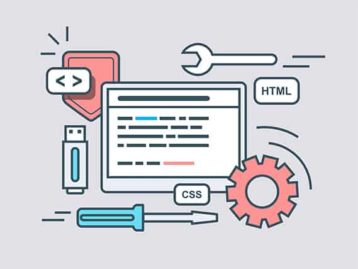
On the other hand, the language is used for static web pages and cannot be used for dynamic functionality. There can also be issues with browser compatibility, as some browsers may be slow to adopt new features of the language. Also, users are required to create separate web pages for HTML despite the presence of similar elements.
Basic knowledge of HTML does not require any form of formal education or profound computer literacy. However, advanced levels of the language require knowledge of CSS and JavaScript, as these technologies are required in addition to HTML for creating the majority of content for websites.
HTML is the most basic computer programming language and is used by 90.7% of all websites in the tech world. As such, this language is quite important in ensuring cybersecurity. This language can easily be used by hackers to spread false information or even deform a website. HTML can also be used in content spoofing, enabling hackers to steal vital information such as user usernames and passwords from websites.
Why is Learning Programming Languages Important for Cybersecurity?

Understanding programming languages is important for cybersecurity because languages such as C, Python, C++, JavaScript and others can help security professionals perform daily tasks. Cyberattacks range from SQL injections to engineering attacks. As an expert, recognizing the symptoms and causes of any cyber threat will help resolve the problem. Although many employers may not require that an employee have in-depth coding experience, having coding knowledge will give cybersecurity professionals an idea of what the software is doing and recognize whether a code is malicious. Understanding programming languages also helps security experts recognize vulnerabilities in a specific application and discover how an attacker could exploit those weaknesses.
Note:
However, no programming language provides complete cybersecurity as different programming languages have different security mechanisms in place. For example, C enables experts to detect buffer overflow weaknesses in the software of a system, and JavaScript helps to identify security issues in web apps, while SQL can be used to prevent SQL injection attacks.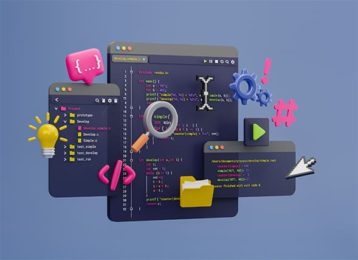
Programming languages are often used in mobile app development and system programming. Programming languages can also be used in machine learning, artificial intelligence, interactive web development and enterprise applications. Other applications include creating system applications, data analysis, system tools and operating systems, server-side programming, data management and mobile app development across various operating systems. Since all of these are web-based, they are vulnerable and may be prone to cyberattacks; hence, cybersecurity needs to be tightened across these channels, and programming languages can help to create a secure and safe environment.
This is important:
Programming languages can be used for cybersecurity if applied correctly and with the right tools. Overall, users can ensure better cybersecurity by keeping software up-to-date and using firewall and antivirus protection, strong password management tools and two-factor authentication.How Often is a Programming Language Used for Cybersecurity?
Programming for cybersecurity is used often and always. This is because humans are always using computers, websites and systems, and with this comes constant attacks by cybercriminals and hackers.
In cybersecurity, programming languages are needed when building websites, developing applications and analyzing data in machine learning and artificial intelligence. The concept is also required when creating system applications and in computer programs.
Where Should You Start to Learn Programming Languages for Cybersecurity?
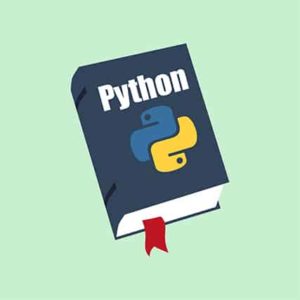
To begin learning programming languages, the best thing would be to start with Python. The Python programming language has a simple syntax, and there are plenty of libraries to make coding easier. The programming language is used to carry out many cybersecurity tasks, such as malware analysis and scanning. Python is also a helpful step toward other more complicated languages because the language provides high-level web readability.
There are steps to follow to learn any programming language. First, select a programming language of choice and learn the basic fundamental concepts. To do this, stick with a language and try to create programs every day without skipping. Also, adopt an ideal learning strategy. The next step involves learning algorithms and data structures, which are the heart of any language and should be practiced until mastered.
To build projects, start with static websites or small projects before moving up. Learn to use the right tools and avoid trying to gain perfection. The last step is the exploration stage. Explore as much as possible in the computer science field; this includes cloud computing, machine learning, systems programming, blockchain, mobile app development, virtual reality and more.
What is the Hardest Programming Language for Cyber Security?
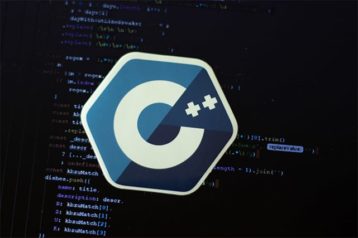
C++, an extension of the C computing language, is by far the most difficult programming language available. The language is even more difficult than C.
The low-level programming language is considered the toughest to learn because the language is overloaded and has a complex syntax that might be difficult for beginners to grasp. C++ is not only a programming language but one that implements the C plus classes. While some languages that fall within the mid-level can be considered the easiest and the hardest programming languages, C++ isn’t one of these.
Being a tough programming language, C++ will require at least three months for absolute beginners to master. But for those who have a basic knowledge of the language or other programming languages, gaining knowledge of C++ will take about one to three months. However, building mastery of the programming language may take two years or longer.
What Language do Hackers Use Most to Threat Cyber Security?

Most hackers use the Python programming language because Python is the easiest to learn. The programming language has global recognition and acceptance owing to the language’s simplicity. Python has played a crucial role in hacking exploits, scripts and malicious programs and is often referred to as the “de-facto language” for hacking programming languages.
That being said, hackers use many different types of programming languages for hacking. These languages include Python, JavaScript and PHP, as well as SQL, C, Ruby, Assembly and HTML. These programming languages are important for enabling hackers to understand and analyze codes and penetrate target fields.
Hackers use various methods to threaten the security of a programming language or system. Common hacking techniques include bait and switch attacks, phishing attacks, keyloggers and DoS/DDoS attacks. Other methods include clickjacking attacks, cookie theft, trojans and viruses.

